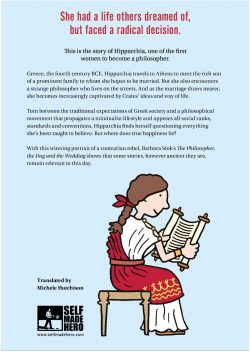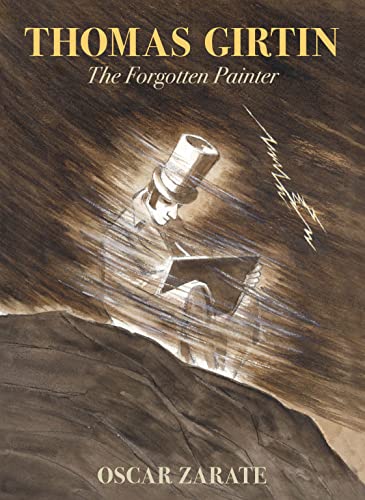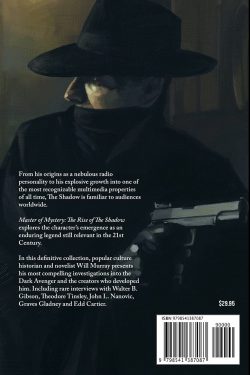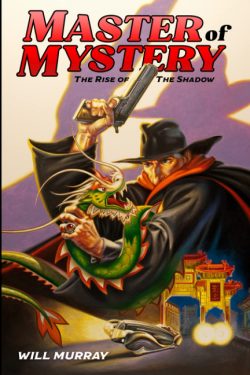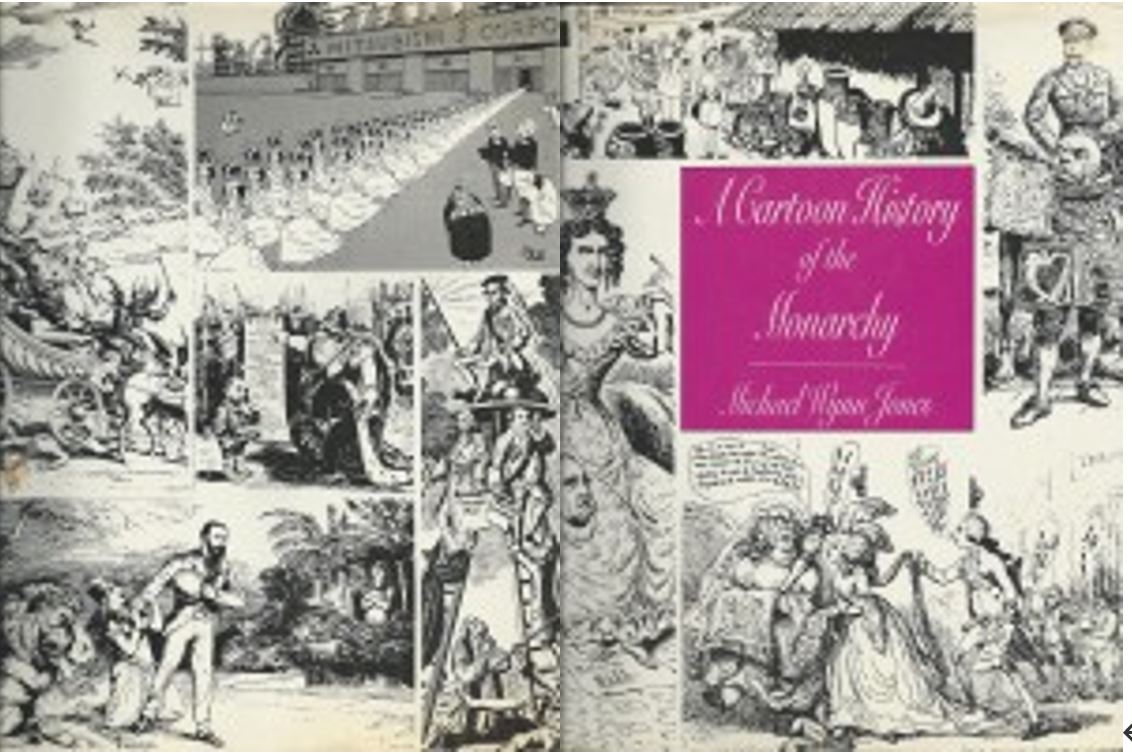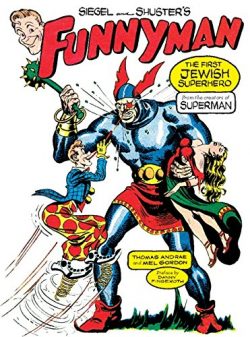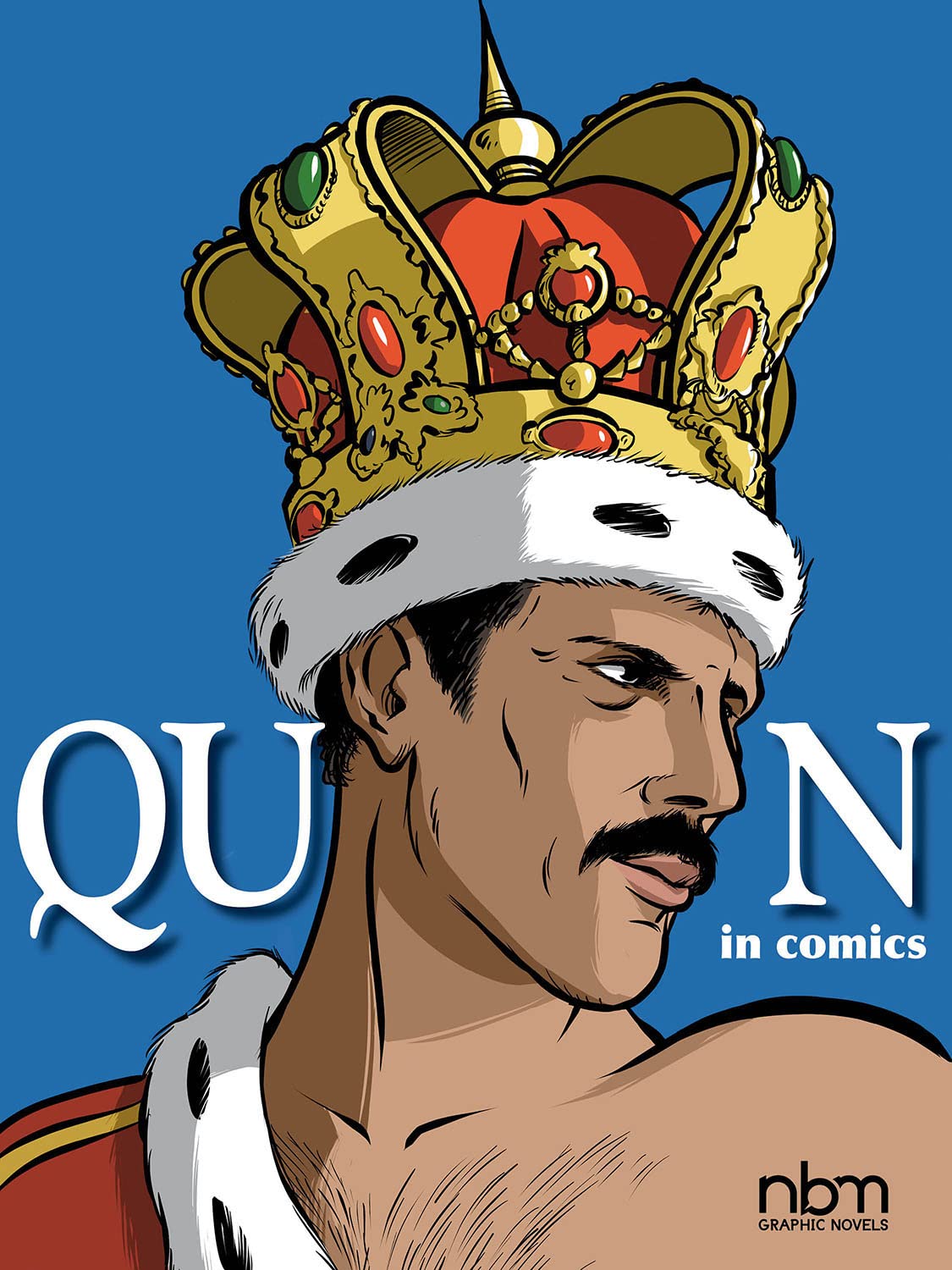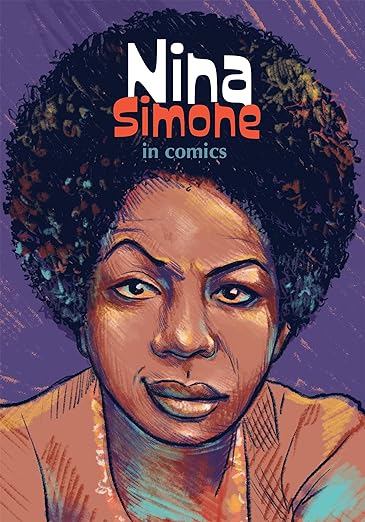
By Sophie Adriansen; with Antoane, Romain Brun, Domenico Carbone, Gabriele Di Caro, Mademoiselle Caroline, Samuel Figuiére, Dario Formisani, Sandrine Fourrier, François Foyard, Christian Galli, Chadia Loueslati, Walter Pax, Isa Python, Benjamin Reiss, Riccardo Randazzo, Adrien Roche, Anne Royant, Cynthia Thiéry, Mayeul Vigouroux, Lysandre Vanhoutvenne, Sara Colella, François Renaud & various (NBM)
ISBN: 978-1-68112-326-4 (HB) eISBN: 978-1-68112-327-1
Nina Simone was a mighty voice dedicated to freedom of expression and emancipation of body and soul. This powerful collaborative visual investigation probes her troubled life, failures and achievements, and highlights a life-long war between family pressures, her own frustrated desires, search for autonomy and the spurious divide between classical music and The Blues.
Another stunning musical biography, this book was released continentally in 2023 and is certain to appeal to readers all over the English-speaking world. Nina Simone in Comics joins NBM’s superb and sublime graphic narrative sub-strand, probing the history of a globally significant performer and musical phenomenon whose works and deeds shook the planet and changed society…
Following a full ‘Discography’ (mirroring a ‘Further Reading and viewing’ section at the end of the book) we have context-providing, photo-packed prose essays augmenting stylish individual comics snippets. Both educative articles and chronological character-confirming visual vignettes are penned by French author, biographer and journalist Sophie Adriansen (La menace des fantômes & Musiques diaboliques [Scooby-Doo], Grace Kelly – D’Hollywood à Monaco, le roman d’une légende, Le Syndrome de la vitre étoilée) who steers a coterie of cartoonists and illustrators dramatising the history and demystifying the myths for us. Each combined chapter opens with a quote from the star or close associates…
Anne Royant opens the show with ‘Music As Company’ detailing early days of a musical prodigy born into a strict Christian “negro” household in proudly segregated Tryon, North Carolina. It’s 1935 and Eunice Kathleen Waymon is growing up in a blanketing swathe of religious music, and utterly unable to keep her little hands off her mother’s beloved pedal organ. Eunice is barely three and plays it better than her astounded mother Mary Kate…
Textual assessment ‘In the Beginning’ sees how the family moved socially upwards thanks to Eunice’s gifts, before Christian Galli reveals in images how the toddler decided ‘I’m Going To Be A Classical Pianist When I Grow Up’. Prose supplement ‘Two Pivotal Figures in her Life’ reveals the influence of Mary Kate’s employer Mrs Miller – who sponsored music lessons for the maid’s kid and organised a fund fuelled by Eunice’s recitals that made enough money to carry the child to music college. The other founding spirit was English music teacher Muriel “Miz Mazy” Massinovitch who taught the wonder girl poise, erudition and Bach: inculcating a love of “real music” that carried Eunice to the top of the world but also tainted her life with bitter disappointment…
Growing into a teen hampered by ingrained prejudice and restricted by repressive “Jim Crow” laws prompts the question ‘Do You Feel Black?’ (illustrated by Samuel Figuiére) before support feature ‘Eunice Discovers the World’ shows her dream to be a classical performer continually challenged by blinkered society, before Dario Formisani and colourist Lysandre Vanhoutvenne share heartbreaking revelations as the high school graduate’s dream of attending a prestigious music academy founders due to skin colour in ‘Early Setbacks.’ Her transition to Philadelphia and New York is explored through prose and photos in ‘Talent to Develop’…
Mother Mary Kate was a hard, pious woman and when Eunice adopted a stage name to play nightclubs and earn money, her surrender to ‘The Devil’s Music’ (art by Mademoiselle Caroline) sparked years of bitter contention. That transition and its repercussions is covered in ‘Eunice Becomes Nina’ before Adrien Roche draws ‘Pivotal Figures’ and an essay follows Nina ‘Back to Atlantic City’ for a new life of overnight popularity and appreciation but utterly at odds with her childhood aspirations…
A lifetime of poor choices in men and managers is first touched upon in the Antoane-illustrated ‘We Start Recording Tomorrow’ whilst bizarre circumstances leading to ‘The First Album’ are seen, prior to François Foyard’s cartoon crescendo ‘Patience…’ detailing how Nina responded to learning her life and music were controlled by men because she never read contracts: a situation expanded upon in ‘An Underwhelming Success.’
Cynthia Thiéry shows ‘A New Star Is Born!’ after playing a landmark gig at a legendary venue, further explored in text supplement ‘The Town Hall’, after which Chadia Loueslati depicts Nina’s marriage and reasons for staying with an abusive controller whose love manifested in bouts of violence and deep remorse in ‘A Hold On Me’, and ‘A Time of Conflicts’ adds much-needed context to the mystery…
Limned by Riccardo Randazzo and fleshed out by colourist Sara Colella, ‘I’ll Be Back’ and text titbit ‘Marriage and Travel’ follow Nina – a mother with no control of her work or finances – as she visits Africa and becomes even more consumed by civil rights issues, leading to her learning ‘Your Weapon Is Music!’ (Isa Python art) whilst ‘1963’ recapitulates the state of the world. Sandrine Fourrier realises Simone’s progress ‘Towards a Music of Protest’, with a prose precis spotlighting Nina’s ‘Time to Get Involved’…
Romain Brun illustrates the birth and spreading social impact of breakthrough composition ‘Young, Gifted and Black’ (co-created with black poet Weldon Irvine) as historical context comes via support feature ‘The Fight Intensifies’, before Gabriele Di Caro revisits public event ‘Human Kindness Day’ (AKA “The Summer of Soul”, and “Black Woodstock”) as a prose essay asks was that ‘The Moment It All Collapsed?’
A decade of letting men control her life and money left Nina Simone a target of the IRS and international exile, as revealed by Benjamin Reiss who draws her ‘In A Pub In Paris’ with prose synopsis ‘An Eventful Decade’ tracking a tragic decline highlighted by a diagnosis of bi-polar disorder. A monumental reversal began when a forgotten track – added as an afterthought to her very first album – was used in a perfume commercial and set the world aglow. Domenico Carbone & François Renaud light up the comeback trail in ‘My Baby Just Cares For Me’, with ‘Nina’s Back’ adding detail to a career resurrection prior to declining mental health triggering a crisis. Limned by Walter Pax & Renaud, ‘That’s Enough!’ with text support ‘Tragedy at Bouc-Bel-Air’ expands on an incident that almost ended Nina’s life…
This compelling journey through oppression and injustice chooses to focus on upbeats at the close, with Nina’s presence at Nelson Mandela’s 80th birthday/third wedding in ‘Happy Birthday, Mister President’ – visualised by Mayeul Vigouroux augmented with essay ‘Swan Song’ – before Royant illustrates the world’s too-late knee-jerk approbation in ‘God Be With You Till We Meet Again’ with a pithy summation ‘Keeping the flame alive’…
In so many ways, Activist Nina Simone was more important than the performer/composer, but whether her actions or her music drew you to her, this book will remind you why and make you miss her all the more. Nina Simone in Comics is an astoundingly readable and beautifully rendered treasure for narrative art and music fans alike: one to resonate with anybody who loves to listen and look. If you love pop history and crave graphic escape, this will truly feed your soul.
© 2023 Editions Petit à Petit. © 2024 NBM for the English translation.
Nina Simone in Comics is scheduled for UK release February 13th 2024 and available for pre-order now. Most NBM books are also available in digital formats. For more information and other wonderful reads see http://www.nbmpub.com/

